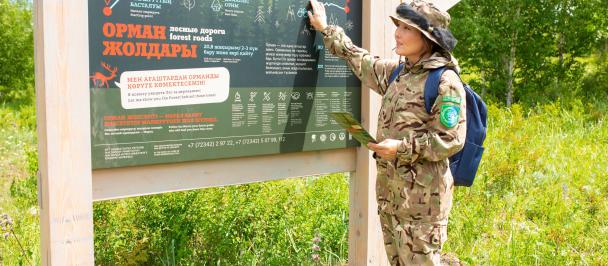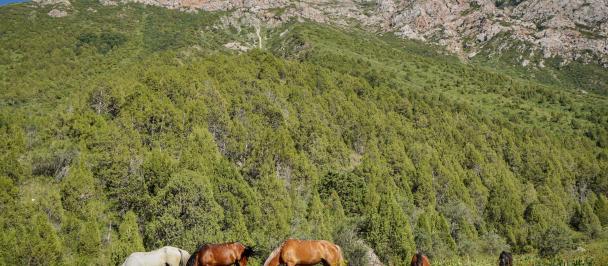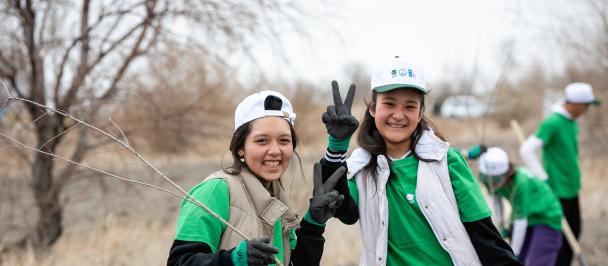Wildlife of Kazakhstan – Iconic Heritage of Future Generations
March 1, 2023
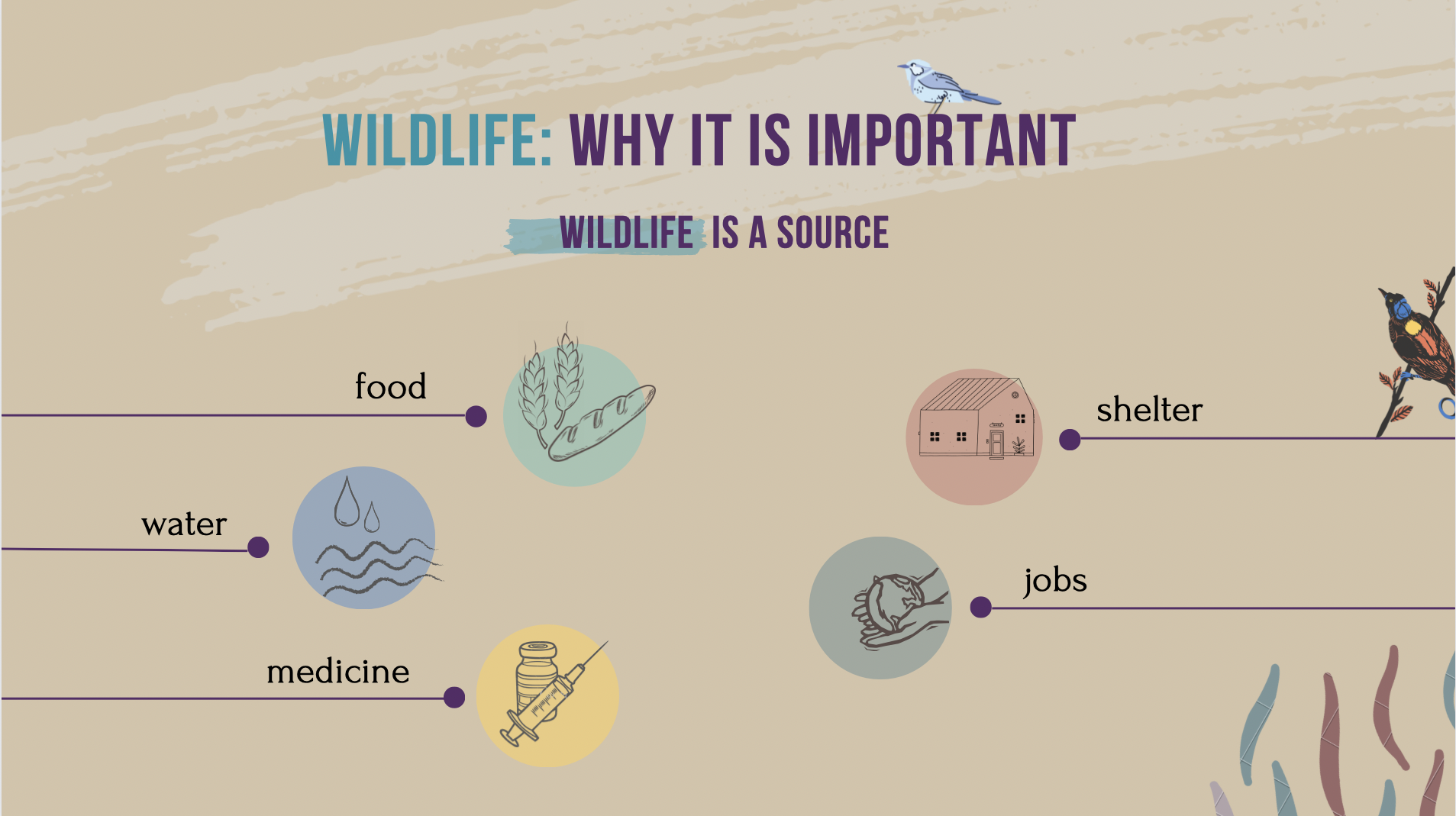
Wildlife is an integral part of our world. Animals and plants ensure healthy ecosystems and make up the food chain that supports life on our planet. Wildlife is a source of food, water, oxygen, shelter, medicine and provides millions of jobs for local communities, while the ecosystem is a source of clean air, freshwater and fertile soils.
What threats confront wildlife?
Human activity, unsustainable agriculture, poaching, industrial development and logging are the reasons that thousands of species of animals and plants are at risk of extinction. According to a World Wildlife Fund report, about 69 percent of wildlife disappeared between 1970 and 2022.
The loss of flora and fauna poses a danger to preserving the equilibrium between people and nature, which in turn directly threatens the existence of humankind. Climate change and its consequences – frequent droughts, floods, deforestation – are the main threats to the degradation of wildlife and to life on the planet.
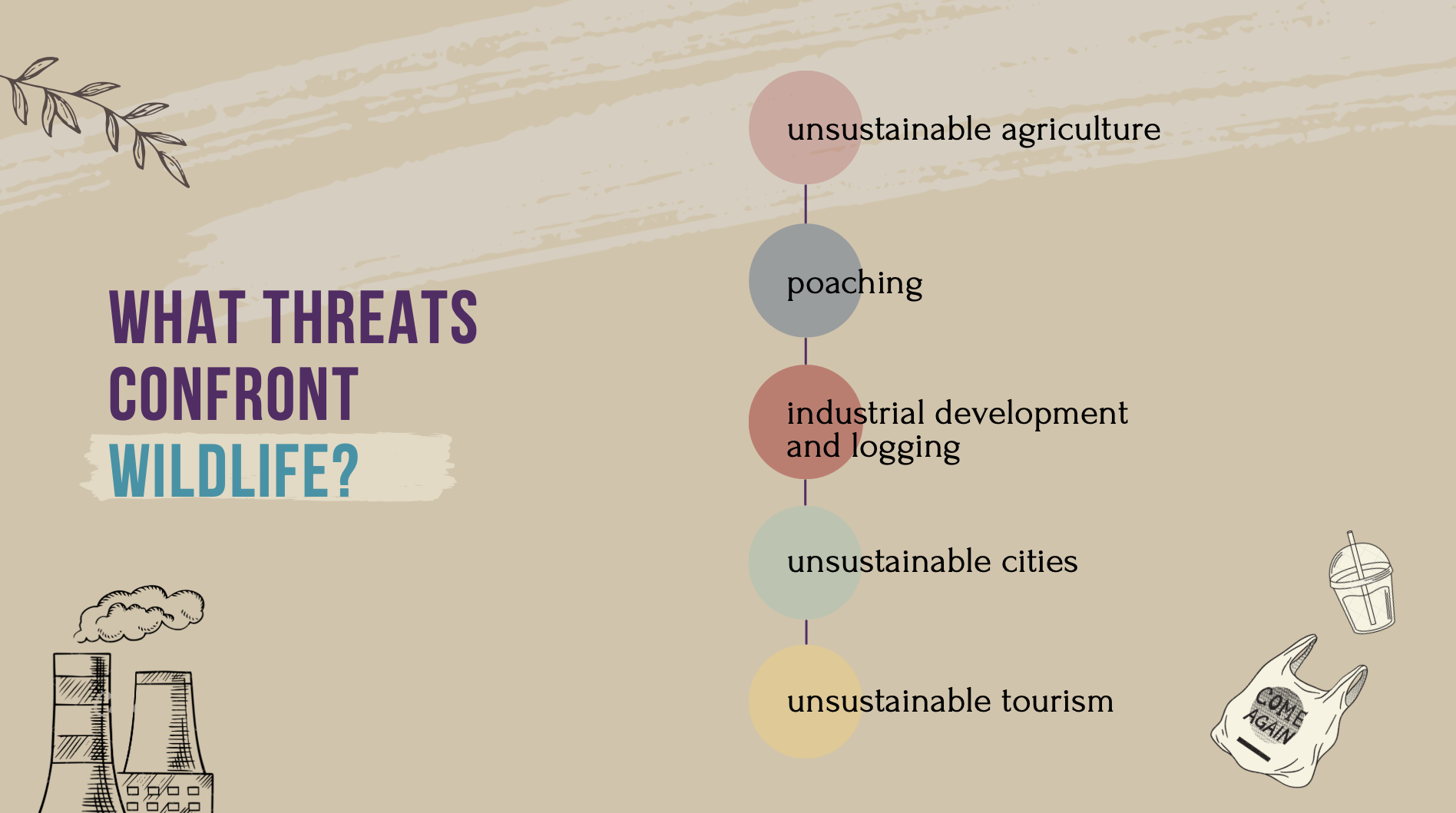
Wildlife of Kazakhstan
The nature of Kazakhstan is diverse.
About 60 percent of the country's territory is occupied by deserts and semi–deserts, other parts are steppes, forests and mountain ranges, home to diverse wildlife. Today there are 835 species of vertebrates in Kazakhstan, including 178 species of mammals, 489 species of birds, 49 species of reptiles, 104 species of fish, among others. There are snow leopard, kulan, manul, whooper swan, Caspian seal and others on the International Union for Conservation of Nature (IUCN) Red List of Threatened Species for Kazakhstan. In total, 387 species of plants and 131 species of vertebrates are included on the IUCN Red List.
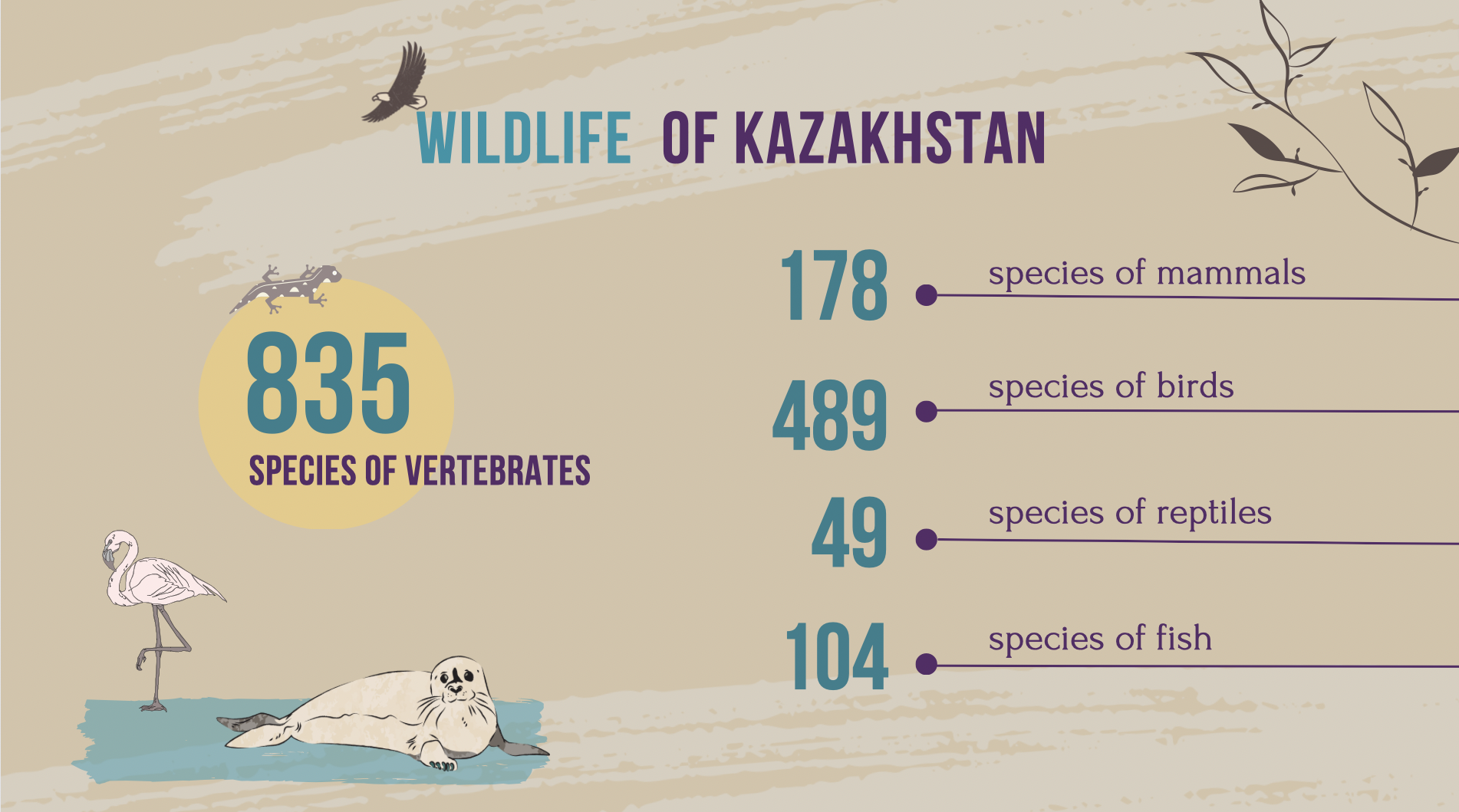
Wildlife Conservation in Kazakhtan
In recent years, there has a positive trend in wildlife protection in Kazakhstan. Significant progress has occurred in the conservation of valuable animal species, such as the snow leopard, the kulan and the Bukhara deer.
Since 2004, the United Nations Development Programme (UNDP), both with the financial support of the Global Environment Facility (GEF) and through related grants with the Government of Kazakhstan, has implemented 10 large-scale initiatives in biodiversity conservation. The contribution to the conservation of globally significant ecosystems of Kazakhstan totals more than US$29million.
Currently, UNDP-GEF, in partnership with the Government of Kazakhstan, are implementing a number of wildlife conservation initiatives. The measures are aimed at wild animal protection, including environmental protection measures; at fighting against poaching; creating ecological corridors; reforestation; monitoring and counting wild animals; improving environmental education among the public; and developing ecological tourism.
UNDP accords special priority to the creation and development of a network of specially protected natural areas in Kazakhstan. Today, the country has 14 national parks, 10 nature reserves, 7 reserves, home to a variety of animals and birds – the Tien Shan brown bear, black stork, Bukhara deer, Asian leopard and gray monitor lizard.
Since 2018, UNDP has been working to upgrade environmental institutions and to monitor wildlife using modern technologies, such as camera traps, thermal imagers, drones. To date, 294 trap cameras have been installed in 14 protected areas of Kazakhstan, which help specialists to conduct research on rare animal species, to keep records of their numbers and their migration routes and to identify potential threats.
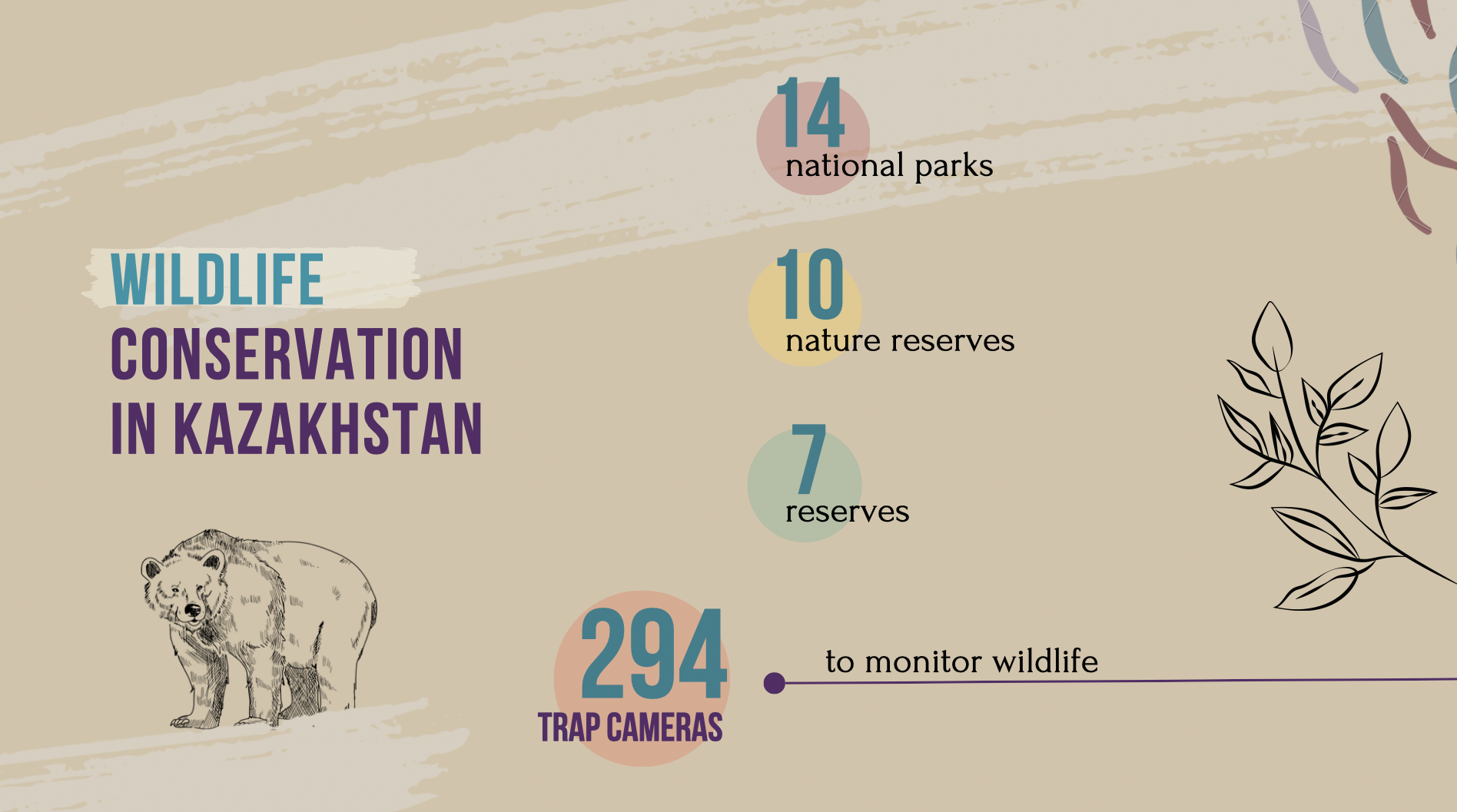
Snow leopard
Kazakhstan is of great interest to the international scientific community, being a cross-border region of snow leopard migration. The animal is included in the International Union for Conservation of Nature (IUCN) Red List and has the status of a rare or endangered species in all 12 countries of its habitat, including Kazakhstan.
In recent decades, the country has made significant progress in the study of rare species. Measures to create and expand protected areas have had a positive impact on the dynamics of animal population growth: if in the early 1990s the number of snow leopards was around 100 such animals, today scientists estimate their number at 141-183 snow leopards.
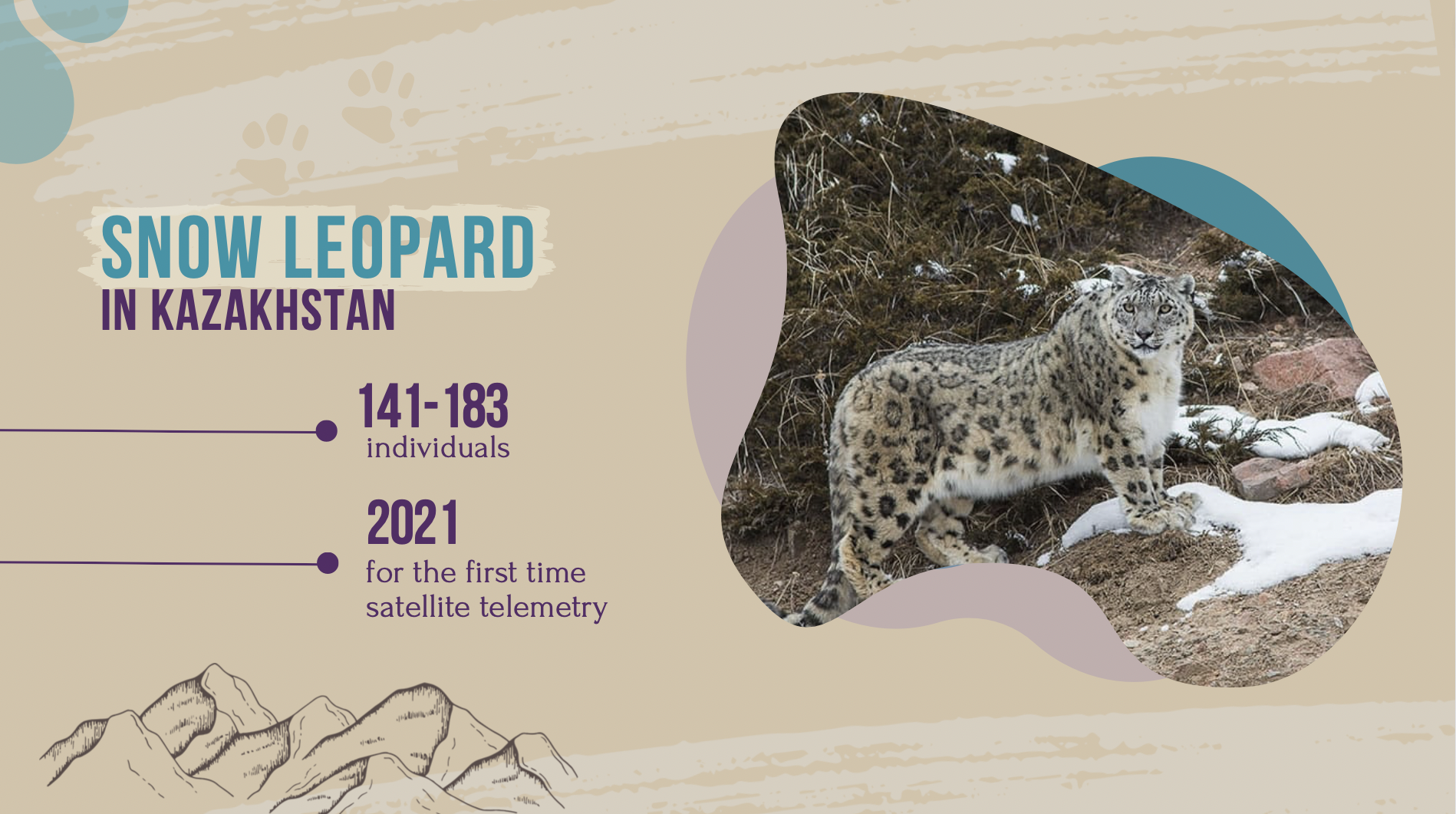
UNDP and biologists work to safeguard snow leopard’s future
Since 2018, UNDP, in cooperation with the Institute of Zoology of the Republic of Kazakhstan, has been conducting research on the snow leopard population in the territories of the Northern and Western Tien Shan, the Kyrgyz Alatau, the Zhetysu-Alatau, the Altai and Saur-Tarbagatai. This initiative allowed experts to identify habitat areas, migration routes of a rare species and also to identify threats and then to develop proposals to minimize them.
From 2010 to 2020, new snow leopard habitats were recorded in Kazakhstan. In 2019, for the first time the trap cameras recorded a snow leopard in the Merke area of the Zhambyl region and in 2021 in the Altyn Emel State National Park of the Zhetysu region.
As part of UNDP’s work, in 2021 for the first time in Kazakhstan, satellite telemetry was used to gather information on the snow leopard. It is a safe and effective method, one widely used in many countries, that allows scientists to obtain very reliable data on the location, on potential threats and on food supply of animals.
One of the key tasks of UNDP is the study and diagnosis of possible diseases that can affect the snow leopard. In 2022, with the participation of national experts, a cryobank of germplasm was created to study the interaction of antigens with antibodies in the blood serum of blood samples of three snow leopards. These studies will help identify potential diseases and develop measures to prevent and minimize them in the animal.
Ile-Balkash Nature Reserve a new home for Bukhara deer
At the beginning of the XX century, the Bukhara deer was completely exterminated due to hunting and habitat degradation. During the last century, a number of attempts were made to restore it not only in Kazakhstan, but also in Central Asian countries. Nowadays, the Bukhara deer is listed in the international Red List and the Red List of Kazakhstan, and its population in Kazakhstan is 1,052 individuals. Since 2000, the World Wildlife Fund (WWF) has launched a programme for the conservation and restoration of the Bukhara deer in four countries of its habitat, including Kazakhstan.
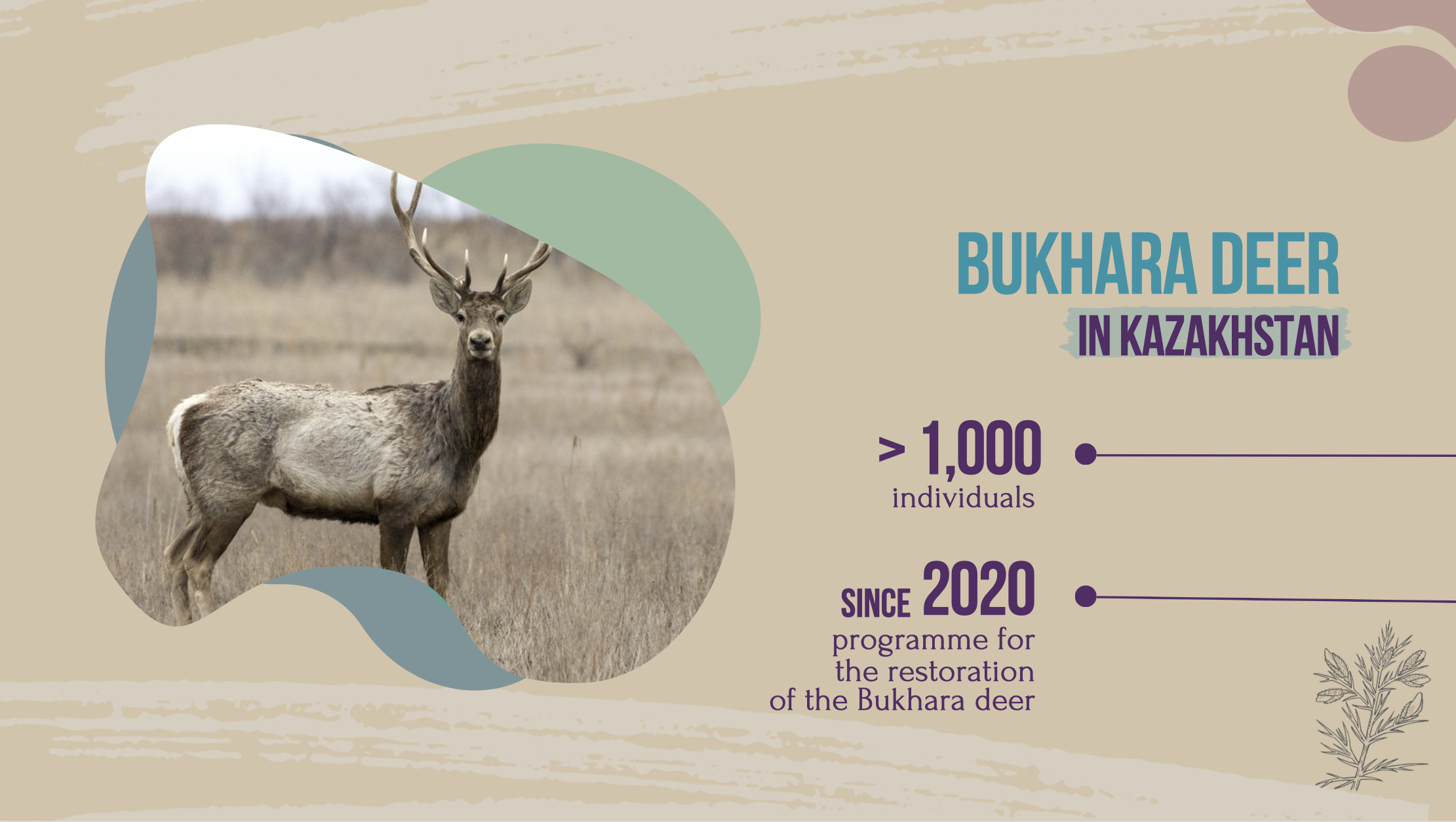
The return of the Bukhara deer after 100 years to the Balkhash region is part of a large-scale project for the reintroduction of the Turan tiger in Kazakhstan, which is being implemented by WWF, UNDP and the Ministry of Ecology and Natural Resources. The project implements number of environmental measures and monitors and records the number of deer in the Ile-Balkhash Nature Reserve, created with UNDP assistance in 2018. Since 2018, almost 140 individuals of Bukhara deer have been brought to the reserve, which have adapted perfectly and are breeding.
UNDP project reintroduces kulan to Ile-Balkhash Nature Reserve
The kulan, like the Bukhara deer, was completely exterminated in Kazakhstan. The only surviving descendant of tarpans, wild donkeys and horses that lived in Eurasia, the kulans completely disappeared in the 1930s.
However, thanks to reintroduction projects that began in the 1950s, its population in Kazakhstan now numbers over 4,500 individuals. Today, the largest population of kulans is in Altyn Emel National Park. Despite the positive dynamics of the kulan’s population growth, their numbers still remains low, present on less than 1 percent of its former range, and at the same time there are no kulan populations on the steppes of central Kazakhstan.
Currently, UNDP is implementing an initiative aimed at reintroducing kulans to their former habitat. In 2022, about 60 animals were transported to the territory of the Ile-Balkhash Nature Reserve. Thanks to modern technologies, the reserve staff can monitor the animals and their migration routes.

We need to protect the rich diversity of birds, animals and plants, humanity because it is a source of inspiration. It nurtures a sense of wonder. It is integral to the balance of nature. We need decisive action today. By conserving wildlife we are investing in a more sustainable future of people and the planet.

 Locations
Locations